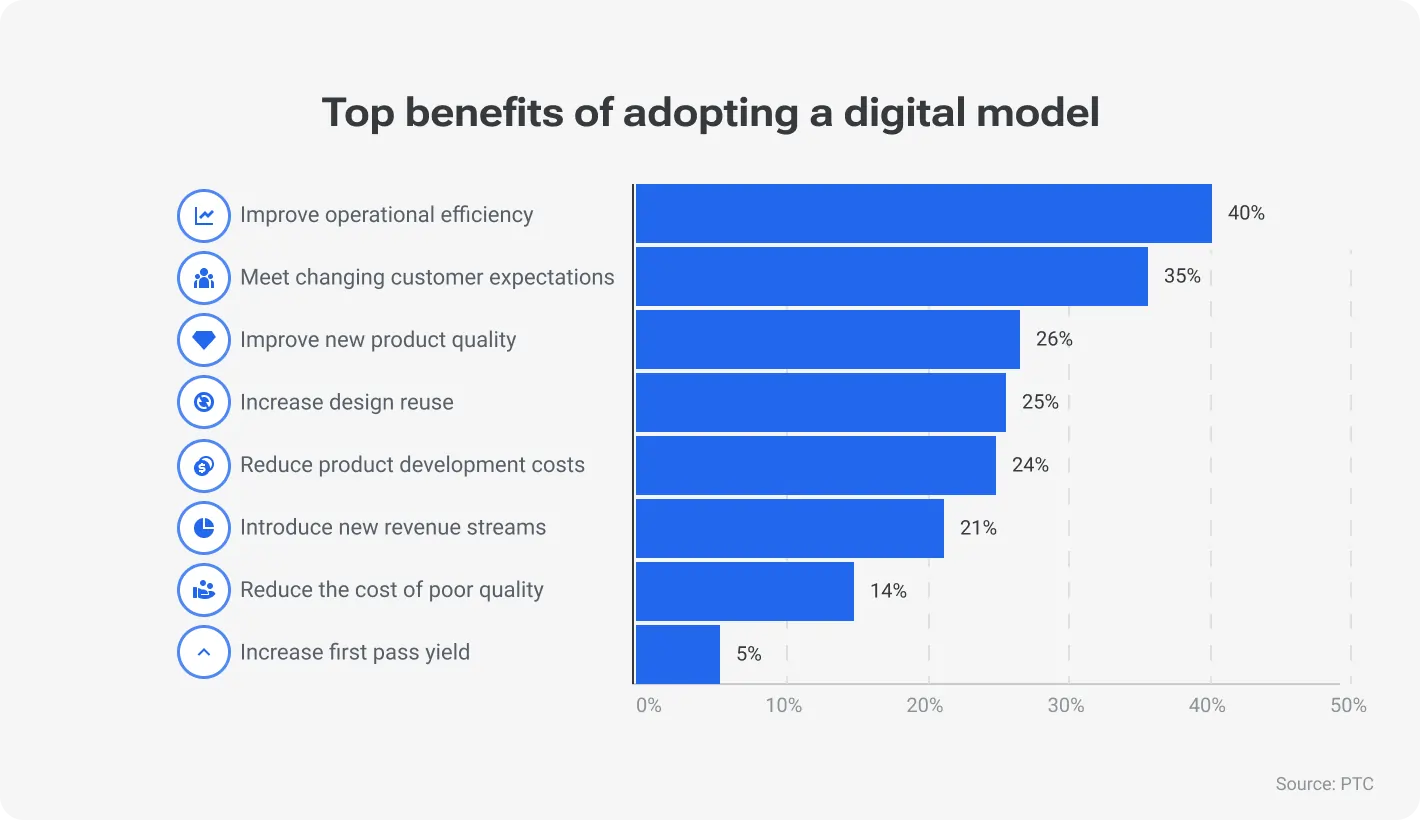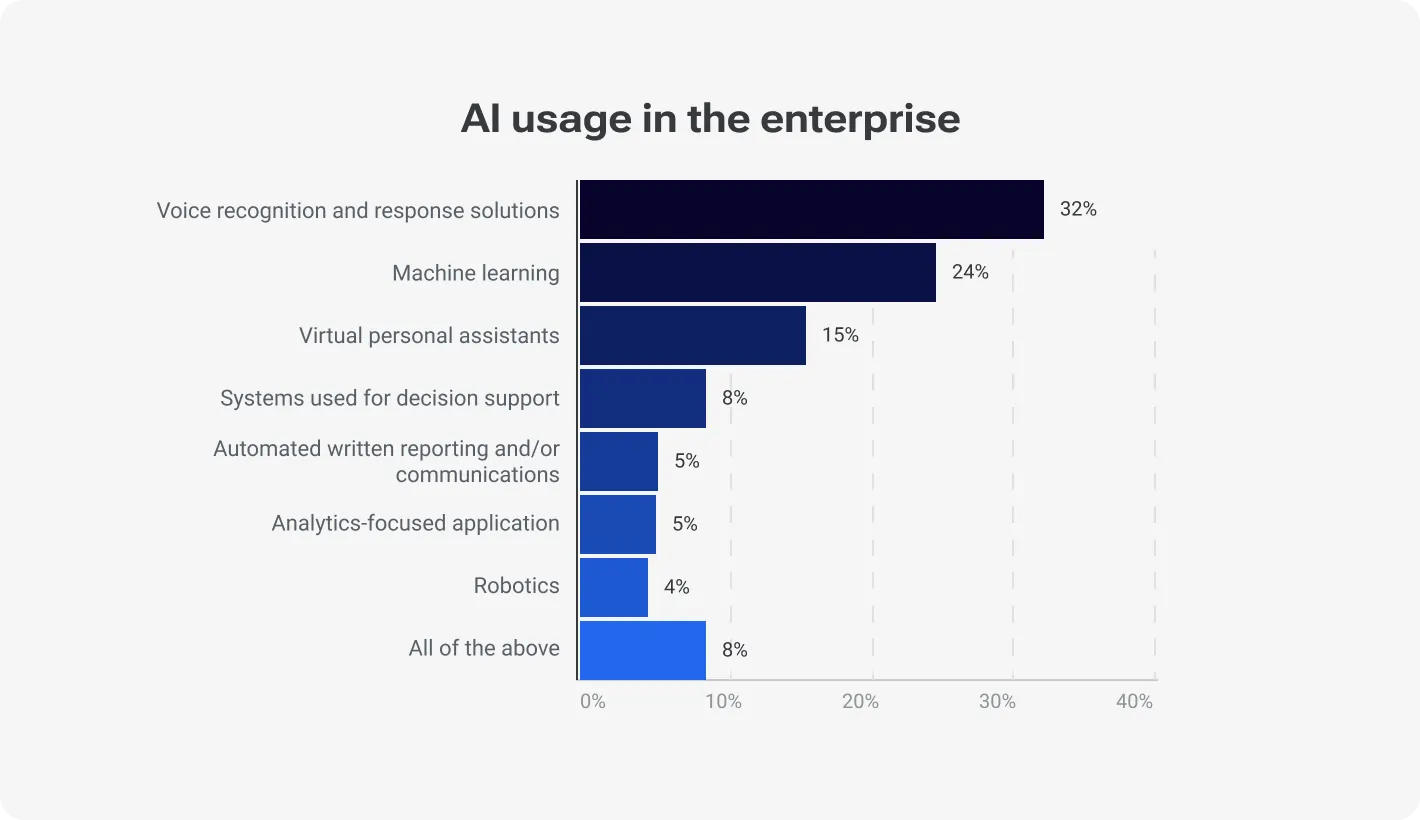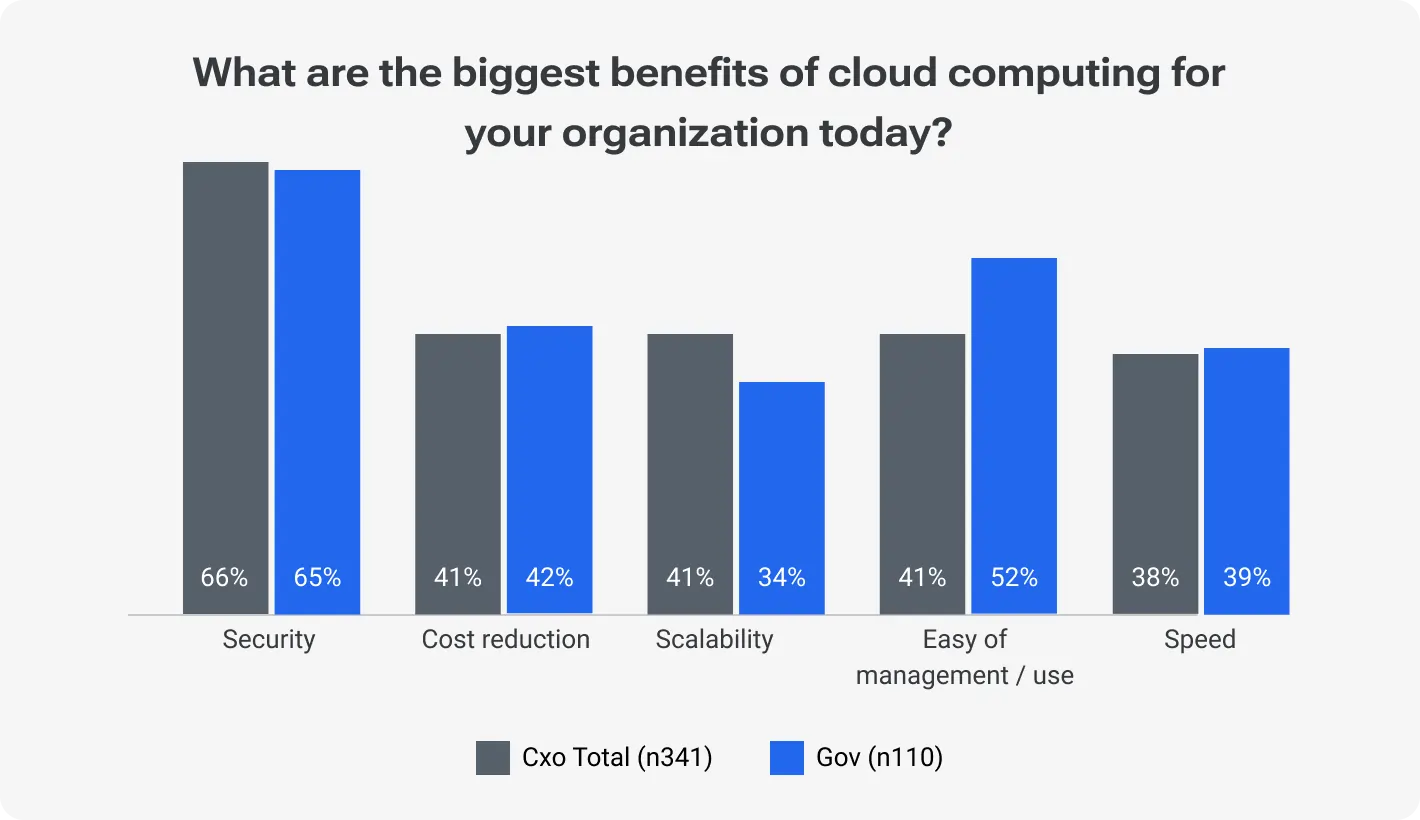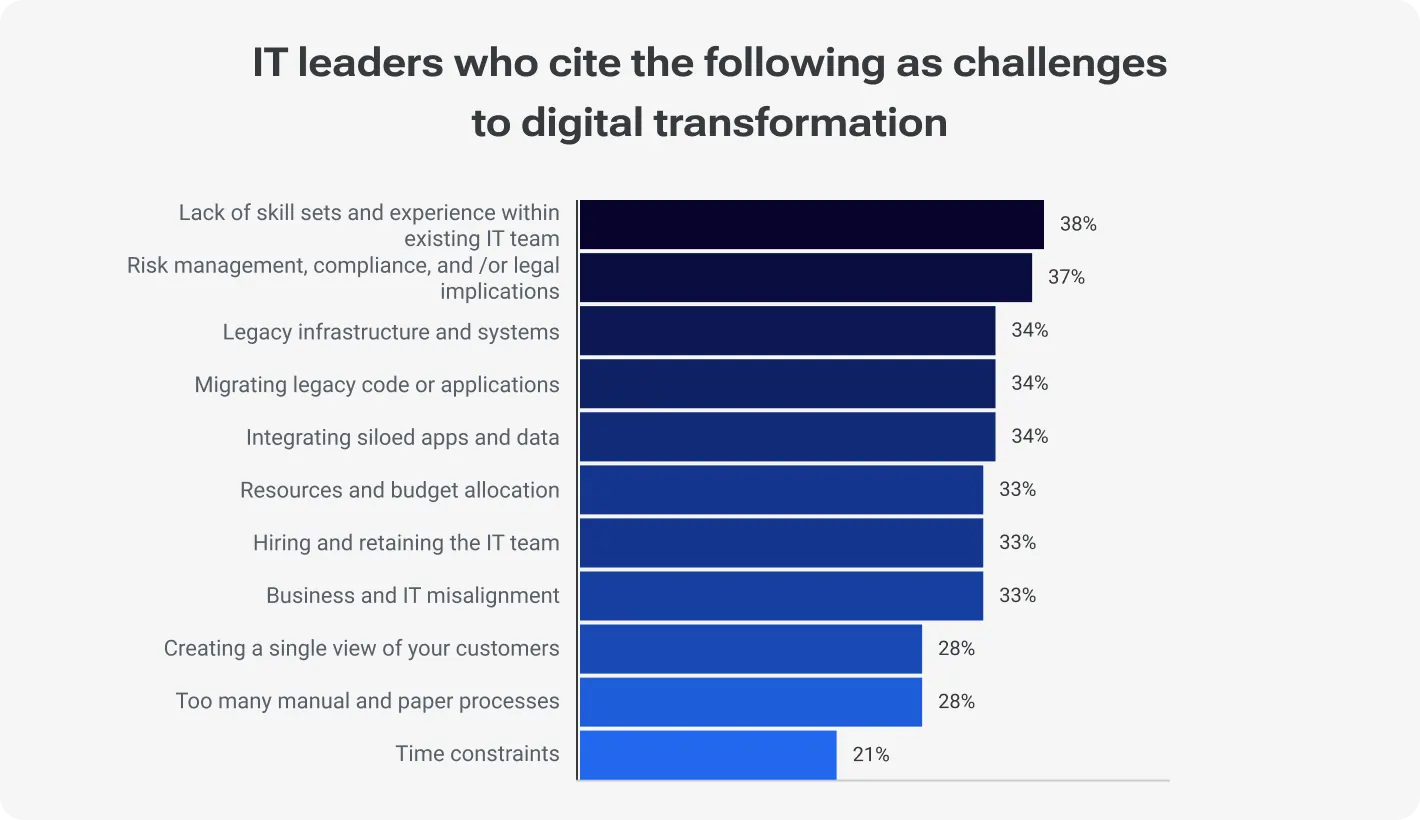Outsourcing to Czechia

How much does it cost to hire developers in Czechia?
Dec 2nd 25 - by Devico Team
Find out how much it costs to hire software developers in Czechia in 2025. Compare hourly rates, roles, and factors that impact pricing.
Hire
Hire by role
Hire Front-end developers
Hire Back-end developers
Hire Full-stack developers
Hire Android developers
Hire iOS developers
Hire Mobile developers
Hire AI engineers
Hire ML engineers
Hire Automation QA engineers
Hire Blockchain developers
Hire Data engineers
Hire Cloud engineers
Hire by skill
Hire JavaScript developers
Hire TypeScript developers
Hire Ruby on Rails developers
Hire React Native developers
Hire Flutter developers
Hire Golang developers
Hire React.js developers
Hire Python developers
Hire PHP developers
Hire .NET developers
Hire Java developers
Hire Laravel developers

Digital transformation
August 21, 2024 - by Devico Team
Summarize with:
Digital transformation is revolutionizing the business landscape, with many companies rushing to integrate the latest technologies for a competitive edge. The global digital transformation market is set to grow from $2.71 trillion in 2024 to $12.35 trillion by 2032, at a CAGR of 20.9%. Despite this rapid growth, not all companies succeed in their transformation efforts. A significant obstacle is the absence of a clear strategy; 31% of UK business and technology leaders report that their organizations lack a strategic plan. This article delves into how to develop a successful digital transformation strategy using a detailed, step-by-step approach.
A little heads-up at the beginning. Digital transformation is the integration of digital technologies into all areas of your business to create new or modify existing processes, corporate culture, and customer experience according to market dynamics. Despite not being around long, digital transformation has already become a kind of buzz phrase, that everyone hears everywhere but needs help understanding what it means. Or how to properly apply it to business. It is a comprehensive approach that involves more than just technology adoption; it includes rethinking business models and processes. Moreover, the final result should be in fostering a culture that embraces continual change and innovation.
This process can imply improvements in several areas:
Adopting disruptive technologies such as artificial intelligence (AI), cloud computing, internet of things (IoT) and big data analytics to enhance operational capabilities;
Optimization and automation of business processes to increase efficiency and reduce costs;
Changing organizational mindsets to promote innovation, flexibility and a customer-centric approach.
A logical question will be, why does your business need all this? Well, if you need to improve operational efficiency, improve the customer experience, or gain a competitive edge in the market, it should be your number one choice.

However, the truth is that on the way to implement enhancements, companies often face certain challenges. The main ones include resistance to change, skills gaps among employees, and the difficulty of integrating new technologies with existing or legacy systems. According to Deloitte, 81% of IT leaders report that data silos are hindering their digital transformation efforts.
According to Flexera, 74% of companies have made digital transformation a top priority, however, only 35% of businesses can boast of success in this field. This means starting a business transformation is only halfway, what you need is a reliable digital strategy.
A clearly defined digital transformation strategy eliminates additional hassles and solves the main issues. You create a coherent transformation roadmap that helps achieve the desired results. Here is why it is so important to develop a strategy before diving into the unknown:
Focusedness. As building a strategy involves a structured approach, you can be sure that all efforts are focused on achieving the goal. It allows you to outline specific goals, initiatives, and time frames.
Effective allocation of resources. It's like a top view of all your initiatives. You can assess their importance, highlight the most crucial ones, and direct resources there. This will allow you to get the highest return on investment.
Dynamic risk management. When building a strategy in advance, you must take into account possible risks. This allows you to develop a countermeasure or mitigation plan.
Alignment with business objectives. It is easy to get lost during transformation because new ideas and technologies are constantly appearing. Following the plan and consistently aligning it with overall business goals helps achieve long-term sustainability and growth.
And last but not least, you will be able to navigate the complexities of transformation. While you certainly can’t be prepared for all of them, you’ll feel more confident having some backups.
How digital transformation is driving customer experience
So, with all of the essentials in mind, we've created a step-by-step guide to help you build a digital transformation strategy from scratch. Feel free to tailor it to your specific needs.
When starting a new big journey, you need to clearly understand where you are now and where you are trying to get to. This will allow you to distinctly build a route. So, to determine the urgent state, you need to:
Identify the current technologies in use and evaluate their efficiency and scalability;
Analyze existing business processes to identify bottlenecks and inefficiencies;
Assess the organization's readiness for change and identify potential resistance points.
As soon as you have answers to all the above questions, proceed to planning. Your task is to set clear, measurable goals for transformation. Most often, tasks are set to improve the customer experience, increase operational efficiency, reduce costs, or create new business models. For example, your goal might be to reduce customer service response time by 50% by implementing AI chatbots.
At one time, Domino's Pizza had to reinvent its own company in order not only to stay in business but also to gain a competitive advantage. By investing in technology to develop online ordering systems, mobile apps, and social media engagement strategies, they radically improved customer engagement.
87% of business leaders name digitalization a company priority, yet only 40% of organizations have brought digital initiatives to scale. What is even more essential, without a shared vision across the company, digital transformation efforts will continue to stall.
That is why your goal is to create a compelling digital transformation vision that aligns with broader business goals. Conventionally, this step can be divided into several main stages.
Creating a vision: Create a clear and inspiring vision that articulates the desired future state of the organization. This vision should be ambitious yet achievable. It will become a kind of guiding star for all transformation efforts. And it should reflect the company's core values and long-term goals.
Strategic road map: A roadmap should break down the transformation journey into manageable steps, each with specific goals and outcomes. This helps maintain focus and momentum throughout the process.
To build a robust strategic roadmap:
Identify the major projects and actions needed to achieve the vision.
Set important milestones to track progress. Don't ignore regular checkpoints to ensure the project stays on track.
Set realistic time frames for each stage of the transformation. This sets expectations and maintains a steady pace.
Here's a tip: you can and should involve all stakeholders early in the process to ensure buy-in. This includes managers, department heads, and employees at various levels of the organization. That way, you'll be sure everyone is on the same page and committed to the transformation effort.
And a pro tip. Stakeholder engagement strategies:
Maintain open and transparent communication channels to keep stakeholders informed of progress, challenges, and successes. If necessary, tailor communication to different stakeholder groups, addressing their specific concerns and interests.
Conduct workshops and brainstorming sessions that involve stakeholders in the planning and problem-solving processes.
Apply visuals, like infographics and videos to make complex concepts easier to understand and more engaging.
Provide the necessary training and resources to help stakeholders adapt to change.
Develop and implement feedback mechanisms to collect opinions and suggestions, for example, surveys and interactive Q&A sessions.
Build a dedicated change management team to oversee stakeholder engagement, manage resistance, and facilitate smooth transitions.
Microsoft is a great example of a visionary approach to digital transformation. The company started its transformation journey in the mid-2010s under CEO Satya Nadella, when he redefined its vision to focus on "mobile-first, cloud-first" solutions. Alongside tech investments, Nadella reached employees, customers, and partners to communicate the vision. He focused on cultural change at Microsoft and emphasized understanding growth and innovation. It resulted in significant growth in its cloud services and AI capabilities, placing Microsoft among technology leaders.
Since digital strategy is literally focused on technology, this is an important step that should be approached with extreme caution. However, it is impossible to carry out digital transformation based only on the latest solutions. You need to change internal processes and culture in the same way, otherwise you will get updated and very expensive old processes instead of productivity boost and profit growth.
When choosing the right technologies, consider the following criteria:
Make sure the technologies you choose directly support your digital transformation goals.
Your perfect technology should grow with your organization and adapt to new business needs.
Assess the ease of integration of new technologies with existing systems.
The most often used transformative technologies include:
Cloud computing as it provides scalable and flexible infrastructure.
Artificial intelligence (AI) as it enhances decision-making and automates processes.
Internet of things (IoT) that can enable real-time data collection and analysis.
Big data analytics can provide insights for informed decision-making.
One more tip: Be careful when choosing technologies for transformation within your company. You definitely won't need all of the above or all available on the market, but how exactly do you choose what suits you? You can use the help of professionals, that is, contact companies that provide digital transformation services, or use our short guide below.
Conduct a thorough assessment of your business needs and identify technology gaps that are preventing you from achieving your transformation goals.
Explore available technologies and vendors to find the best fit for your organization.
Evaluate the costs, benefits, and potential ROI of each technology option.
Evaluate potential vendors based on their track record, customer reviews, and support services.
Develop a comprehensive integration plan to ensure a smooth implementation.


Who really knows how to use modern tech, that's IKEA. A decade ago everything from internal processes to interaction with customers needed change. So, they’ve developed a step-by-step digital transformation strategy that was based on their key values but included using the latest technologies to meet uprising challenges.
They’ve gradually invested in e-commerce and AI-powered chatbots, securing high growth for e-commerce which went from 7% of revenue to 31% in 3 years, then updated warehouses using IoT and significantly enhanced customer service making it much more engaging with AR and VR in IKEA Place Augmented Reality App.
So, it is clear that it is impossible to rely purely on technology. A loyal and dedicated person always stands behind success. Or a whole team. For the successful development and implementation of an IT strategy, you will need real professionals, whom you can attract from the outside, or retrain your employees. Outsourcing is also always available.
38 % of IT leaders call skill gaps one of the main obstacles to successful digital transformation.

Whatever you choose, you'll definitely need professionals with strong expertise in the relevant technologies, project management, and change management. Just give the task to your recruitment department to find the right specialists for you. Use this step-by-step algorithm to simplify and speed up the process:
Analyze strategic goals and tech requirements to identify the skills needed for successful digital transformation.
Explore skills within the organization. Conduct surveys and interviews with employees to understand their current skill level and expertise.
Compare your current skills list with future needs to identify areas lacking competencies, such as data analysis or cloud computing.
Do not rush to solve all the issues at once. Prioritize skills gaps based on their transformational impact.
Hire new employees with the specific skills needed to fill critical gaps.
Offer job rotations and project assignments that allow employees to gain hands-on experience and develop new skills.
Continuously monitor and evaluate the progress of skills development initiatives.
Adjust the skills development plan as needed based on feedback and the changing needs of the company.
If you decide to use your own talent pool, invest in training programs to upskill existing employees. Digital transformation often requires new competencies that current staff may not possess, so continuous learning and development are critical.
Retraining and professional development strategies:
Training programs: Find or develop seminars, courses and certifications in new technologies and methodologies.
Mentoring: connect Less experienced employees with mentors who can guide their development.
On-the-job learning: Allow employees to learn through hands-on experience with new tools and processes.
Pro tip: Encourage a collaborative culture that promotes cross-functional teamwork. Digital transformation affects different parts of the organization, so it's important to overcome differences and ensure teams collaborate seamlessly.
Another good example of successful digital transformation is GoodShape which was held with the assistance of Devico. Afflicted with outdated processes and the need to enhance customer experience, GoodShape implemented a comprehensive digital strategy. Devico provided backend and front-end specialists to implement essential changes in performance and UX/UI design. Thanks to the timely introduction of changes and updates, the company was able to receive gold at the ECCCSA Award in the prestigious category of Most Effective Application of Technology and beat its competitors.
Here's a little hint: the secret is in the details. If you are aiming for gradual and sustainable digital transformation success, no small detail should escape your attention. So, you should be precise and attentive while:
Setting deadlines. Three key points: realistic, achievable, and yet flexible. After all, you will have to take into account not only the required level of complexity of the task but also possible risks and challenges.
Allocating resources. For the plan to work like clockwork, everything must happen on time and in the necessary volume at each stage. It will be difficult for you to manage resources during the implementation of the plan, so consider it in advance.
Determining the results. In building a route, you must have a point of origin and a point of destination. Implement KPIs to stay on track.
Pro tip: Remember, digital transformation is an ongoing and long-term process. Therefore, you should apply effective process management techniques such as agile methodologies and iterative development. Key principles of agile transformation that you should absorb:
Sprints: split the transformation into smaller steps (from 2 weeks to 1 month) with specific goals. It’ll be easier to manage big and complex tasks.
Continuous feedback: collect feedback from stakeholders regularly to adjust and refine your approach.
Gradual progress: focus on making gradual progress that can be reviewed and built upon in subsequent sprints.
Netflix literally predicted changes in the industry, rushed to occupy a new niche, and later became an absolute pioneer among streaming platforms. The transition from DVD service to the newest company took place in several stages, each of which was carefully thought out and developed by a whole team of specialists. Strictly following the plan, and adjusting it as necessary, taking into account the collected feedback, they were able to overcome all obstacles.
When implementing changes, you may encounter various obstacles. To successfully navigate between pitfalls, implement proactive change management. Effective change management strategies will help employees and stakeholders adapt to new processes and technologies. Here are some of the most efficient:
Develop clear and consistent communication systems to inform everyone of transformation progress. Combine various tools and methods, like emailing, whiteboard meetings, and messaging.
Organize feedback sessions or implement a special mechanism consisting of short surveys and questionnaires to collect opinions and considerations.
Offer comprehensive training programs to equip employees with the skills and knowledge they need to handle the new digital environment.
Provide ongoing support through help desks and FAQs to quickly resolve issues.
As for the change management tools your choice is wide and variable. You can use special software like HelpDesk or Giva to track the changes or make a perfectly fitted combination of different programs.
Build a personalized communication system using Slack or Microsoft Teams. Create group chats and a separate information channel where it would be easy to find the information you need.
Manage tasks and track progress with specialized apps like Jira and Trello. Integrate them with other internal applications to create a robust ecosystem.
Provide employees with continuous training based on their skills and needs through custom LMS or ready-made solutions from TalentLMS, Docebo, or Trainual.
Although the primary responsibility for digital transformation rests with the team directly engaged in it, it will be useful to involve employees at all levels. Active participation and feedback from them can significantly accelerate the transformation process.
Pro tip: Maintain ongoing engagement with all stakeholders, including C-suite, department heads, and external partners to ensure alignment and support throughout the transformation journey. According to a Deloitte survey, 87% of respondents feel the nature of digital transformation is changing. As a result, the role of the CIO and other IT leaders is becoming more critical than ever.
Starbucks has focused its digital transformation efforts on improving customer engagement and process optimization. The company created a communication ecosystem that combined different tools and techniques to provide updates and gather feedback from employees. They implemented AI and data analytics to personalize customer interactions and optimize inventory management. All their efforts led to increased sales, brand awareness, and continuous innovation.
A digital transformation plan without success metrics is like movement without a vector. You never know where it will lead you. Moreover, setting success metrics and tracking progress ensures continuous improvement and ultimate success. What can you do here?
You need clear and transparent metrics and KPIs. Two things to consider here: they must be aligned with the overall transformation goals and provide insight into different aspects of the process.
Regularly track progress to ensure the transformation is on track. This means, you have to collect data, analyze trends and create reports to inform stakeholders.
Use feedback from employees, customers and other stakeholders. Make adjustments based on data and drive continuous improvement.
Adapt your strategy in real time based on the information you receive. It’ll help to maintain the pace of innovation and ensure the long-term impact of improvements.
How to measure the success of your digital transformation efforts?
Depending on your transformational goals, your KPI can include:
Digital technologies adoption and innovation metrics;
Customer experience and satisfaction;
Operational efficiency and infrastructure performance;
Employee engagement;
ROI and revenue growth;
Cost-efficiency and investment;
Market share and competitive position.
These are absolute must-have steps in the guide you can rely on when developing your digital transformation strategy, however, it is quite flexible and can be expanded with several more options for you.
Nike has focused its digital transformation on several key areas: its direct-to-consumer (DTC) strategy, digital innovation, and supply chain optimization. To make sure their digital transformation initiative was working properly, they set key KPIs: NikePlus membership and app engagement rates, average inventory turnover, number of products released per year, increase in e-commerce revenue per year, etc. After analyzing the data, they adjusted their strategy to get the highest results today. In some quarters, Nike's e-commerce sales increased by more than 80%, significantly increasing overall revenue and increasing customer engagement and loyalty.
A reliable and effective digital transformation strategy is the key to your continued success. You will definitely have to put in the effort to create the perfect version, but the beauty is that you can constantly change and adapt your steps, taking into account the results you get along the way.
By building a flexible and robust strategy, you guarantee that improvements will be timely and efficient. You already have a step-by-step instruction, so start today! The earlier you join the club of innovators the faster you'll get to your business goals.
If it still seems too complicated for you or you require professional assistance, feel free to contact our managers for consultation.
Outsourcing to Czechia

Dec 2nd 25 - by Devico Team
Find out how much it costs to hire software developers in Czechia in 2025. Compare hourly rates, roles, and factors that impact pricing.
Outsourcing to Czechia

Nov 25th 25 - by Devico Team
Compare Czechia and Poland for software outsourcing in 2025. Discover costs, talent, infrastructure, and which country fits your project best.
Outsourcing to Czechia

Nov 18th 25 - by Devico Team
A complete guide to outsourcing software projects to Czechia, learn about costs, talent, benefits, and how to build successful partnerships in 2025.